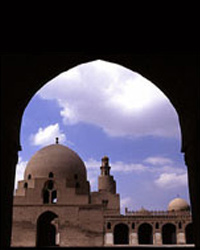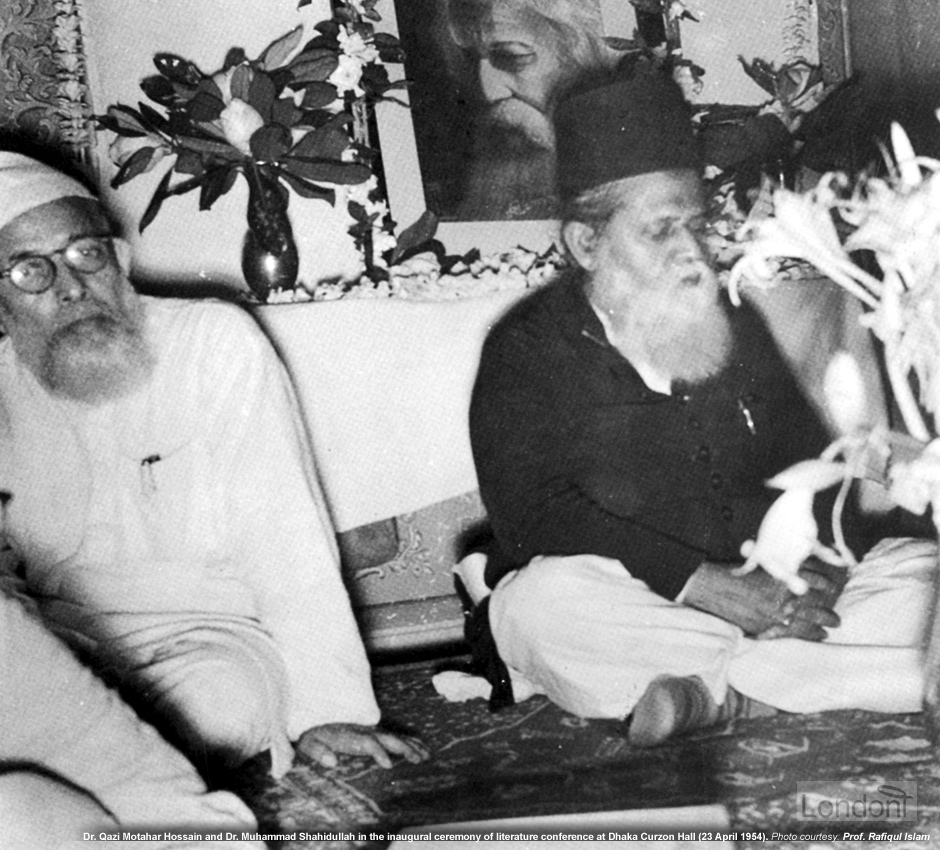
Dr. Muhammad Shahidullah & others advocate Bangla and question suitability of Urdu
Last updated: 5 October 2017 From the section 1952 Bhasha Andolon
The new language controversy of Pakistan started even before the creation of Pakistan.
In 1946, Abul Hashim, General Secretary of Bengal Provincial Muslim League (BPML), had proposed in his party's election manifesto that Bangla be the state language of Bengal. He remained active during the Bengali Language Movement and days after Ekushey February tragedy he was arrested and jailed. He was to remain a prisoner of the Pakistan state for sixteen months.
By the early 1940s, Abul Hashim emerged as a politician of a different kind with his preachings of Islamic socialism on the one hand, and his ardent belief in the principle of self-determination of every nation in India, on the other. He was often believed to be a communist, which he was not, in the Marxist sense of the term. It seemed that he was a separatist and a supporter of Jinnah’s “two-nation” theory but, in fact, he believed in the right to self- determination of every nation. According to him, India was a multi-national geographical entity where people of different religions, castes, races and languages lived side by side. Hashim was the exponent of the idea of the “multi-nation” in India and believed in nationalism, regionalism, lingualism and socialism. His political moves for the United Independent Bengal in 1946-1947, with Sarat Chandra Bose and others clearly exposed him as a secular and democratic leader.
Rana Razzaque, author
When the independence of India became imminent, Chowdhury Khaliquzzaman, a Muslim Leaguer, declared at an Urdu Conference held in Hyderabad on 17 May 1947 that the national language of Pakistan would be Urdu. This view was supported by Dr. Ziauddin Ahmed, a former Vice Chancellor of Aligarh University of India, who stipulated on 14 July 1947 since Hindi was going to be the state language of India, Pakistan should adopt Urdu as her state language. Dr. Muhammad Shahidullah, a renowned Muslim linguistic researcher and a respected Bengali scholar from Dhaka University, challenged his suggestion. He rejected this discriminatory proposal which he believed was "tantamount to political slavery".
Bengali being the mother tongue of 55% of the total population of Pakistan deserves to be the state language of new nation. Once Bengali is being adopted as State language, we may then deliberately focus on the question whether or not Urdu can also be afforded the status of one of the State languages of Pakistan.
Dr. Muhammad Shahidullah in an article titled "Pakistaner Bhasha Shamashya" (The Language Problem in Pakistan) in Daily Azad newspaper, Kolkata, on 29 July 1947
A month before Dr. Shahidullah, award-wining essayist (and later Director of Bangla Academy) Abdul Haque had written an article entitled "Bangla Bhasha Bishoyok Prostab/Bhasa Bisayak Prastab" which initiated the debate on the role of Bangla in the soon-to-be Pakistan. Published in two installments in the Kolkata daily "Ittehad" on 22 and 29 June 1947, the article argued for Bangla as Pakistan's state language. Abdul Haque had written many more essays on Bangla language and Bengali nationalism during the 1948-1952 Language Movement. These included 'Pakistaner Rastrabhasa' (1947), 'Urdu Rastra Bhasa Hale' (1947), and 'Arbi Harafe Bangla' (1949). In 1966, he wrote two essays 'Muslim Jatiyatabad: Punaniriksa' and 'Yuddha O Sampradayikata' which were published in the monthly Samakal under the pseudonym of Abul Ahsan. The Government of Pakistan confiscated the issues of Samakal for publishing these two essays.
Like Abdul Haque, Dr. Shahidullah continued his efforts for protecting his mother tongue after independence and his principle stand on this issue added much confidence and legitimacy to language movement in both 1948 and 1952 phases. As the President of the East Pakistan Arabic Association, he also campaigned for Arabic as one of the national language but never favoured for writing Bengali in Arabic script. He opposed the plan of central government for Arabization of Bengali script and called it an external aggression against Bengali language and culture.
 Abul Hashim ()
Abul Hashim () 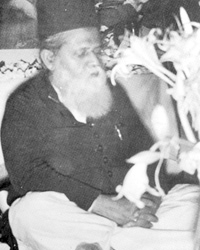 Dr. Muhammad Shahidullah ()
Dr. Muhammad Shahidullah ()  Abdul Haque ()
Abdul Haque () 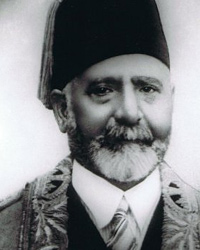 Dr. Ziauddin Ahmed ()
Dr. Ziauddin Ahmed ()
GAL triggers Bangla campaign
In July 1947 the Gono Azadi League (People's Freedom League), or GAL for short, was formed by a small group of workers including some discontented Muslim Leaguers for mobilizing public support to make Bengali as one of the state languages of new country. It was formed in Dhaka, capital city of the province of East Pakistan, under the leadership of Kamruddin Ahmed, a well-known Bengali leader. He was one of the pioneers of the first phase of the Bengali language movement of 1948.
Bangla will be our State language. All necessary steps need to be taken immediately for making Bangla language suitable for all parts of Pakistan. Bangla shall be the only official language of East Pakistan.
Kamruddin Ahmed, Gono Azadi League (GAL) leader
Though the group was small in size yet it aroused the sentiments of progressive workers who played important role in the coming years for political development in East Pakistan. However, GAL could not become a political organization because government restricted its activities. In 1950, this organization was renamed as Civil Liberties League.
 Kamruddin Ahmed ()
Kamruddin Ahmed ()
Gonotrantric Jubo League
At the same time as the creation of GAL, the Gonotantric Jubo League (Democratic Youth League) was established at Dhaka by students, political workers and non-communal and secular elements of the society. One of its primary task was to highlight to the government the distinctive features of languages, literatures and cultures of various regions of Pakistan. It decided to call a conference for 6th and 7th September 1947 to forge unity among the various pro-Bengali forces to build up resistance against the imposition of Urdu and decide on future course of actions. A draft manifest was adopted a month earlier on 5 August 1947. However, no single newspaper reported the September conferences due to the intervention of government agencies.
Government made sporadic attacks on organization along with repressive measures against its members in the name of eradication of "communism", but the dedicated workers of the Gonotantric Jubo Leauge remained as vanguards in both phases of 1948 and 1952 of Bengali language movement. In spite of initial enthusiasm, the organization did not make much headway and became practically defunct.
The Bengali 'salariat' – people who draw salaries from the state (or other employers) and who aspire for jobs – would have been at a great disadvantage if Urdu, rather than Bengali, had been used in the lower domains of power (administration, judiciary, education, media, military etc). However, as English was the language of the higher domains of power and Bengali was a 'provincial' language, the real issue was not linguistic. It was that the Bengali salariat was deprived of its just share in power at the centre and even in East Bengal where the most powerful and lucrative jobs were controlled by the West Pakistani bureaucracy and the military.
Moreover, the Bengalis were conscious that money from the Eastern wing, from the export of jute and other products, was predominantly financing the development of West Pakistan or the army which, in turn, was West Pakistani - (or, rather, Punjabi-) dominated. The language, Bengali, was a symbol of a consolidated Bengali identity in opposition to the West Pakistani identity. This symbol was used to 'imagine', or construct, a unified Bengali community, as communities, such as nations, were constructed through print language and other unifying devices in Europe.
Dr. Tariq Rahman, Professor at Quaid-i-Azam University
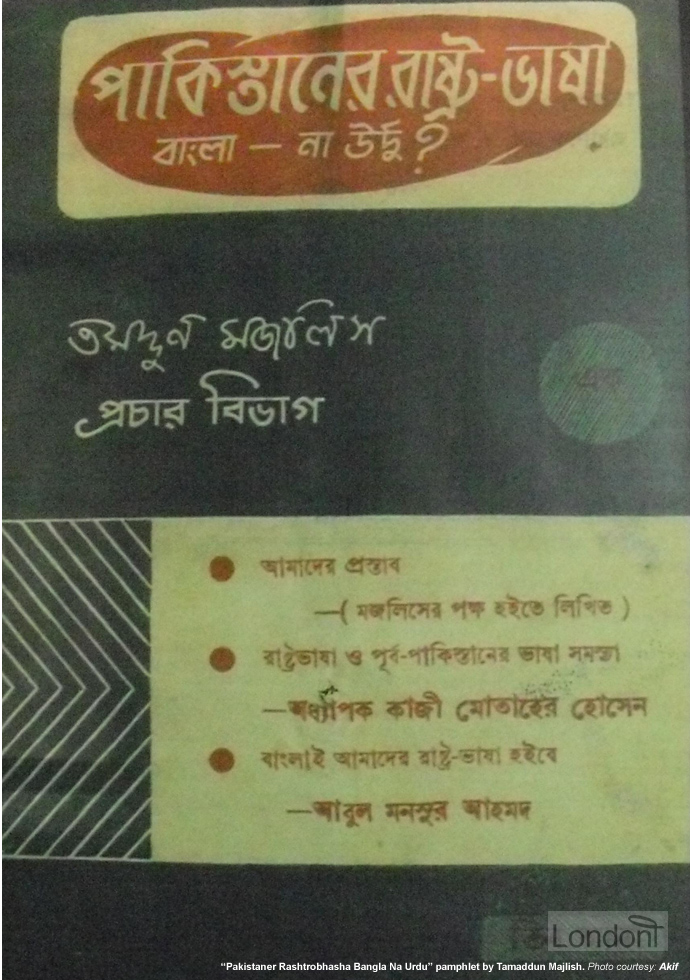
Tamaddun Majlish strengthen case for Bangla
On 15 August 1947 India was partitioned and Pakistan was born. Two weeks later a Bengali cultural organisation was formed made up of scholars, writers and journalists with an Islamic approach.
Tamaddun Majlish (Cultural Association) was organized by professors and students of Dhaka University under the leadership of Professor Abul Kashem, a young Physics professor from Dhaka University, on 1 September 1947. Abul Kashem was the first person to convene a literary meeting to discuss the issue of national language. In the coming days, many other non-communal and liberal organizations supported this issue which finally turned into a mass movement.
Meanwhile, provocative speeches and statements of Pakistan's Minister of Education Fazlur Rahman, for adopting Urdu as the only state language, forced Majlish to make serious preparation for countering him on various forums. Sainik, the weekly organ of the Tamaddun Majlis, Muslim League’s President Akram Khan’s daily paper Azad and many other newspapers came out to support Bengali in spite of central government’s opposition. The only opposing newspaper was the Daily Morning News.
On 15 September 1947, a mere month after Partition and Independence, Tamuddun Majlish issued a pamphlet in Dhaka entitled "Pakistaner Rashtra Bhasha: Bangla Na Urdu?" (Pakistan's national Language: Bangla or Urdu?). The authors of this historic booklet, Dr. Qazi Motahar Hossain, Abul Mansur Ahmed and Professor Abul Kasem made a strong case advocating that Bengali had all the qualities to become the language of instruction in education, offices and courts of East Bengal, as well as the language of central government.
In the pamphlet "Pakistaner Rashtra Bhasha: Bangla Na Urdu?" Tamaddun Majlish proposed that:
- Bengali will be:
- The medium of instruction in East Pakistan;
- The court language of East Pakistan;
- The official language of East Pakistan. - Urdu and Bengali will be the two official languages of Central Government of Pakistan.
- Bengali will be the first language for the purpose of imparting education in East Pakistan which will be learnt by 100% of people;
- Urdu may be treated as second language or inter-wing language in East Pakistan which can be taught as a second language to those people who will be working in West Pakistan. It will be more than adequate, if Urdu is learnt only by 5% to 10% of population of East Pakistan. Urdu may be taught in higher classes at the secondary school level in East Pakistan;
- English will be the third or international language of East Pakistan. - Both English and Bengali will be used for few years as official languages in East Pakistan
Those who ran the country failed to appreciate the significance of this claim.
The proposals were the manifestation of the aspirations of the Bengali-speaking people of Pakistan. Unfortunately, the Central Government of Pakistan failed ot appreciate the depth of feelings of the majority community of Pakistan and to allot the rightful place for the Bengali language in state affairs.
Rafiqul Islam's contribution on "Language and Civilization Change in South Asia" (1978)
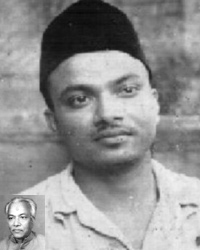 Abul Kashem ()
Abul Kashem () 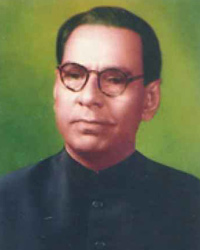 Abul Mansur Ahmed ()
Abul Mansur Ahmed () 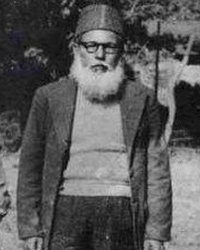 Qazi Motahar Hossain ()
Qazi Motahar Hossain () 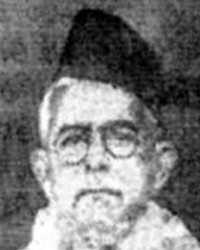 Maulana Akram Khan ()
Maulana Akram Khan ()

